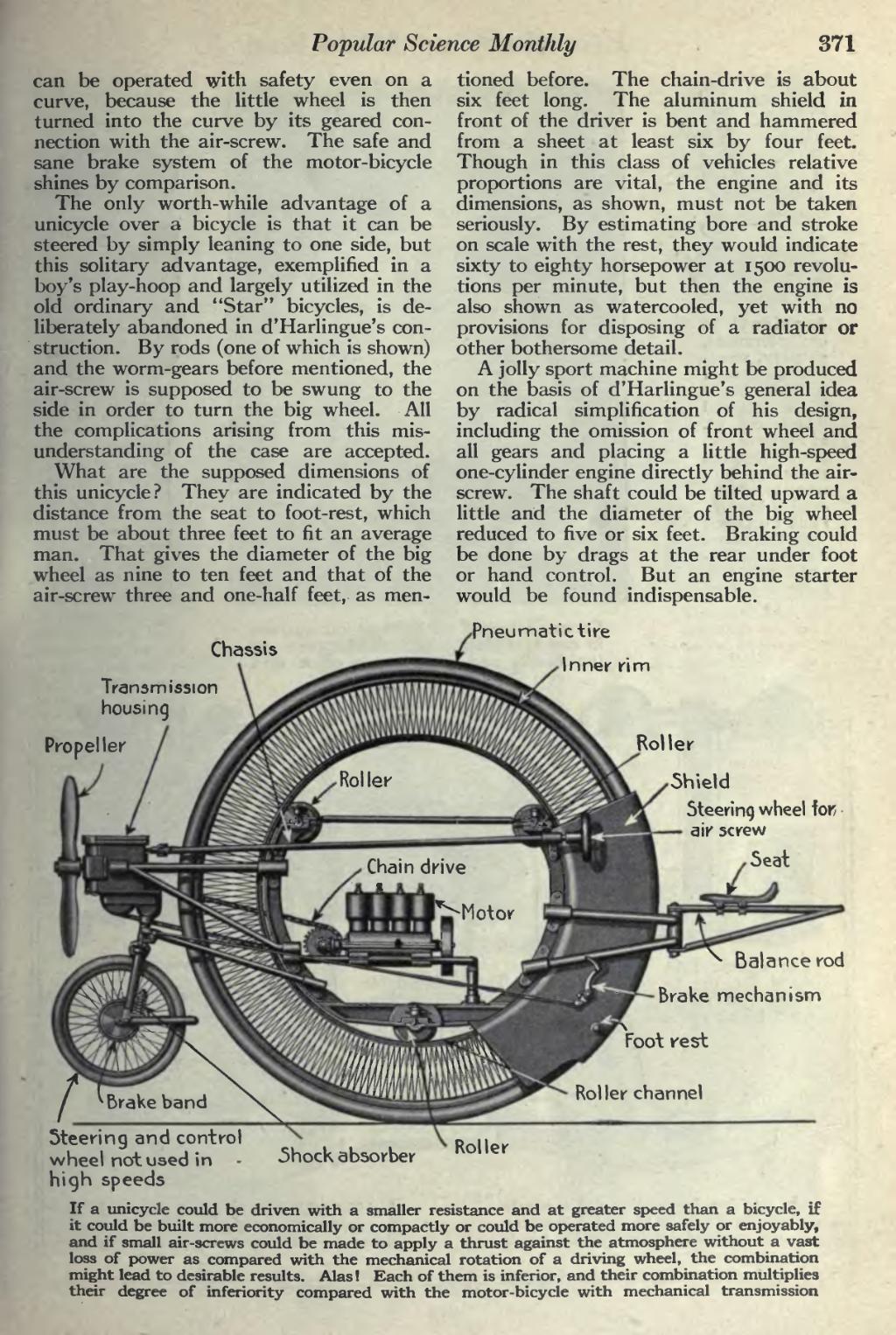Popular Science Monthly
��371
��can be operated with safety even on a curve, because the little wheel is then turned into the curve by its geared con- nection with the air-screw. The safe and sane brake system of the motor-bicycle shines by comparison.
The only worth-while advantage of a unicycle over a bicycle is that it can be steered by simply leaning to one side, but this solitary advantage, exemplified in a boy's play-hoop and largely utilized in the old ordinary and "Star" bicycles, is de- liberately abandoned in d'Harlingue's con- struction. By rods (one of which is shown) and the worm-gears before mentioned, the air-screw is supposed to be swung to the side in order to turn the big wheel. All the complications arising from this mis- understanding of the case are accepted.
What are the supposed dimensions of this unicycle? They are indicated by the distance from the seat to foot-rest, which must be about three feet to fit an average man. That gives the diameter of the big wheel as nine to ten feet and that of the air-screw three and one-half feet, as men-
��Chassis
��tioned before. The chain-drive is about six feet long. The aluminum shield in front of the driver is bent and hammered from a sheet at least six by four feet. Though in this class of vehicles relative proportions are vital, the engine and its dimensions, as shown, must not be taken seriously. By estimating bore and stroke on scale with the rest, they would indicate sixty to eighty horsepower at 1500 revolu- tions per minute, but then the engine is also shown as watercooled, yet with no provisions for disposing of a radiator or other bothersome detail.
A jolly sport machine might be produced on the basis of d'Harlingue's general idea by radical simplification of his design, including the omission of front wheel and all gears and placing a little high-speed one-cylinder engine directly behind the air- screw. The shaft could be tilted upward a little and the diameter of the big wheel reduced to five or six feet. Braking could be done by drags at the rear under foot or hand control. But an engine starter would be found indispensable.
��Pneumatic tire
Inner rim
��Transmission housing
��Propeller
��Roller
Shield Steering wheel for;
���Balance rod Brake mechanism
��Foot vest
��Roller channel
��Steering and control wheel not used in high speeds
��Shock absorber
��Roller
��If a unicycle could be driven with a smaller resistance and at greater speed than a bicycle, if it could be built more economically or compactly or could be operated more safely or enjoyably, and if small air-screws could be made to apply a thrust against the atmosphere without a vast loss of power as compared with the mechanical rotation of a driving wheel, the combination might lead to desirable results. Alas! Each of them is inferior, and their combination multiplies their degree of inferiority compared with the motor-bicycle with mechanical transmission
�� �
